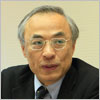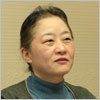
As the name suggests, the collection of The Museum of Oriental Ceramics, Osaka focuses on the ceramics of East Asia. The museum also serves as a research center. Located on Nakanoshima Island in the heart of Osaka City, the museum has a renowned collection of some 6,000 pieces of ceramics, centering on Korean works from the Goryeo dynasty and the Joseon dynasty and Chinese works, including two national treasures and thirteen important cultural properties.
The Ataka Collection accumulated by the former Ataka & Co., Ltd. is the core of the museum’s collection. Founded in 1904, Ataka was one of the ten leading general trading companies during World War II and in the post-war period, but ran into financial difficulties in 1975 and was absorbed by ITOCHU Corporation in 1977.
At that time, the fate of Ataka & Co.’s collection of 965 pieces of oriental ceramics attracted great attention. Since the superlative collection—including 144 Chinese works of the period from the Eastern Han dynasty to the Ming dynasty and 793 Korean works of the period from the Goryeo dynasty to the Joseon dynasty—was of such exceptional cultural value, it would have been a tragedy if it had been broken up at auction, dispersed and lost. The fate of the collection was even discussed in the Japanese Diet.
The Agency for Cultural Affairs made an unprecedented request to The Sumitomo Bank, which was the trustee, to prevent dispersal or outflow overseas of the Ataka Collection. In January 1980, 21 companies in the Sumitomo Group decided to donate all the oriental ceramics of the Ataka Collection to Osaka City, contributing funds for that purpose. In response, Osaka City announced a plan to construct a museum expressly to retain the collection and exhibit it as widely as possible. In November 1982, the museum, one of a handful in the world specializing in oriental ceramics, was established and the integrity of the Ataka Collection was ensured for future generations.
In the aftermath of World War II, the integrity of Japan’s artistic heritage was in jeopardy. Several notable collections established in the pre-war era were dispersed and lost, resulting in a significant cultural loss. It is noteworthy that in these circumstances the generosity of the Sumitomo Group protected cultural assets.

 EN
EN






